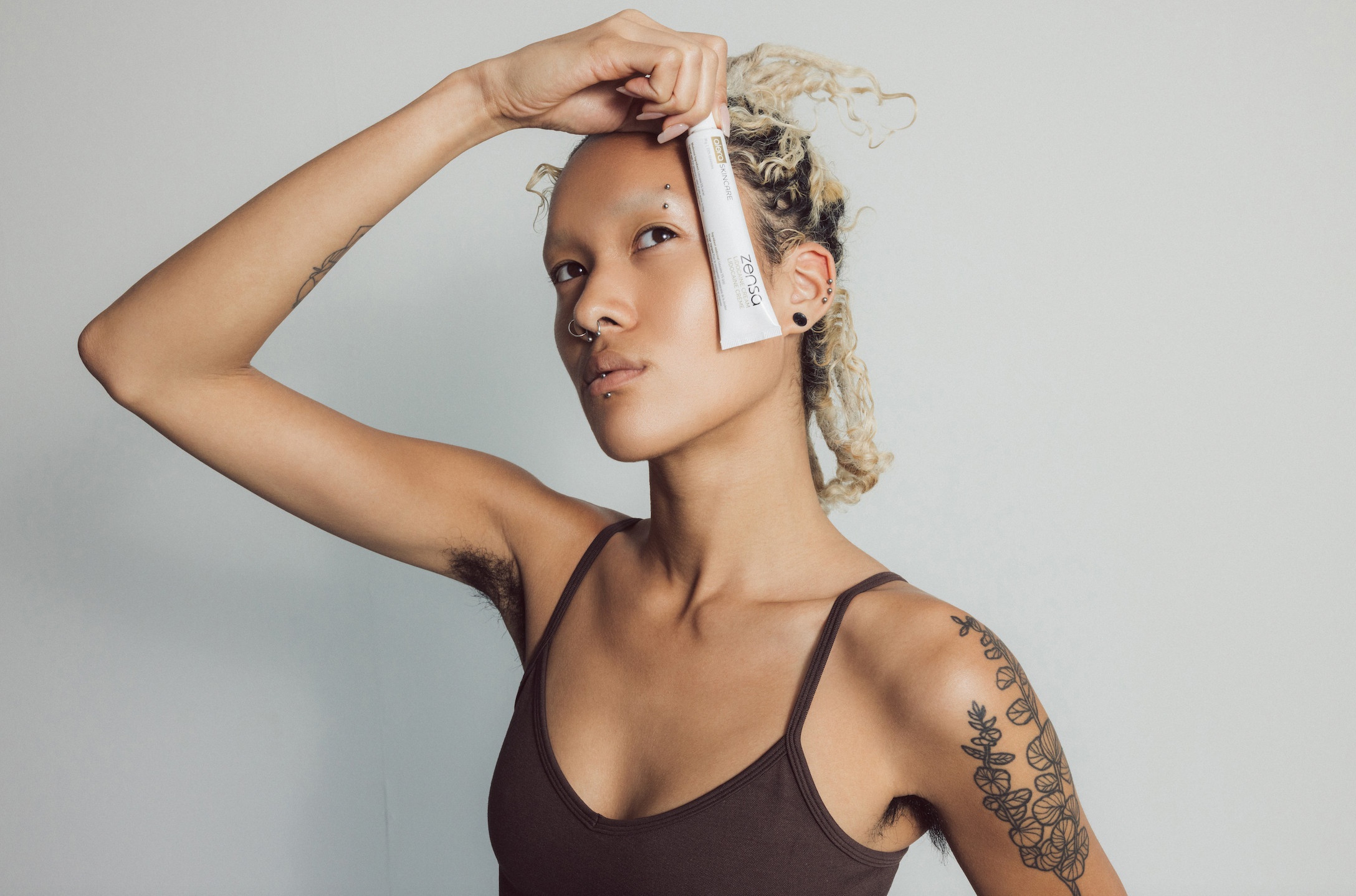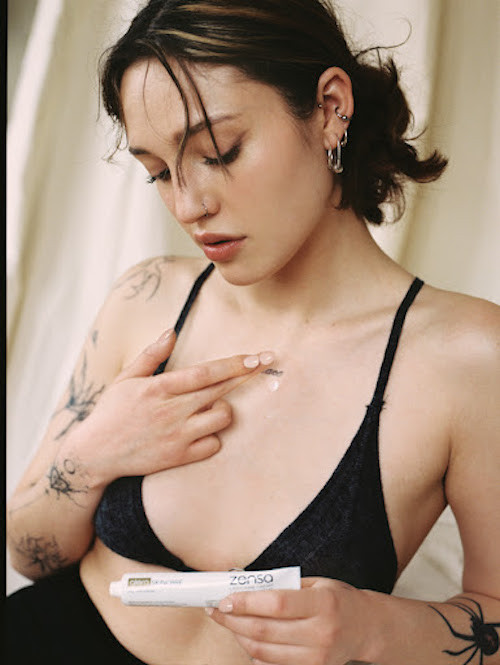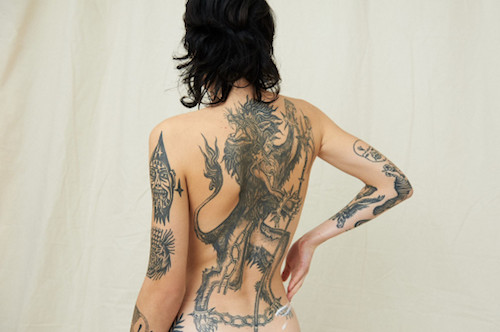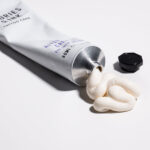Curious about rib tattoos and the pain involved? How Badly Does A Rib Tattoo Hurt, you might ask? At tattooat.com, we understand your concerns and aim to provide insights into the pain levels associated with different tattoo placements. Knowing the pain level of a rib tattoo and how it compares to other body parts can help you make an informed decision, explore pain management solutions, and ensure you’re prepared for your tattoo session. Let’s delve into the world of rib cage tattoos, pain tolerance, and tattoo aftercare so you can confidently embark on your body art journey.
1. What Factors Influence Rib Tattoo Pain?
Many elements influence how much a rib tattoo hurts; it’s not a one-size-fits-all experience. Understanding these factors can help you anticipate and manage your pain effectively.
- Proximity to Bone: Rib tattoos are notoriously painful because the skin is thin, with little muscle or fat between the skin and bone. This close proximity means you’re likely to feel more vibration and sensation from the needle.
- Nerve Endings: The rib cage area has a high concentration of nerve endings. Stimulation of these nerves during tattooing can result in heightened pain.
- Breathing: Each breath causes the rib cage to expand and contract, which can make it difficult for the artist and increase sensitivity.
- Individual Pain Tolerance: Everyone experiences pain differently. Your personal pain threshold will play a significant role in how intense the tattoo feels.
- Artist’s Technique: An experienced artist with a gentle touch can make the process more bearable. The pressure, speed, and technique used by the artist will all impact the level of discomfort.
- Tattoo Size and Complexity: Larger, more detailed tattoos will require longer sessions, leading to increased pain and fatigue. Simple designs may be quicker and less painful.
- Overall Health and Stress Levels: Your physical and mental state can affect your pain perception. Being well-rested, hydrated, and relaxed can help manage pain.
- Use of Numbing Agents: Topical numbing creams can significantly reduce pain by desensitizing the area.
2. How Does Rib Tattoo Pain Compare to Other Tattoo Locations?
Rib tattoos are often ranked among the most painful. Here’s a comparison to other common tattoo placements:
| Tattoo Location | Pain Level | Description |
|---|---|---|
| Rib Cage | High (9/10) | Thin skin over bone with many nerve endings. Movement from breathing can add to the pain. |
| Forearm | Low (2-3/10) | More muscle and fat, fewer nerve endings. Often chosen as a first tattoo location. |
| Outer Thigh | Low-Mid (4/10) | Good amount of muscle and fat. Generally less painful than inner thigh. |
| Upper Back | Mid (5/10) | Thicker skin and fewer nerve endings, but pain can increase closer to the spine. |
| Stomach | Mid (5-7/10) | Pain level can vary depending on body fat and muscle tone. More painful for women, especially in the lower abdomen. |
| Inner Bicep | Mid (6/10) | Thinner skin with more nerve endings compared to the outer bicep. |
| Wrist | Mid (6/10) | Varies depending on whether it’s on the outer or inner wrist. Inner wrist has more nerve endings and thinner skin. |
| Spine | High (9/10) | Bony area full of nerve endings. |
| Ankle/Foot | High (9/10) | Thin skin, close to bone, and many nerve endings. |
| Armpit | Very High (9-10/10) | Delicate skin with a high volume of nerve endings, located above lymph nodes. Considered one of the most painful spots. |
| Groin/Private Areas | Very High (9-10/10) | Delicate skin and a high concentration of nerve endings. Proximity to lymph nodes can increase pain and healing time. |
 Woman with Shoulder Tattoo
Woman with Shoulder Tattoo
The shoulder is a great spot for less pain.
3. How Can You Prepare for a Rib Tattoo to Minimize Pain?
Proper preparation is key to making your rib tattoo experience as comfortable as possible. Here are some strategies to minimize pain:
- Choose an Experienced Artist: Research and select an artist with a reputation for gentle and precise work. Check reviews and ask for recommendations.
- Mental Preparation: Understand that it will be painful, but focus on the result. Visualize the finished tattoo and remind yourself why you want it.
- Stay Hydrated: Drink plenty of water in the days leading up to your appointment. Hydrated skin is more pliable and easier to tattoo.
- Avoid Alcohol and Caffeine: These substances can thin your blood and increase sensitivity. Avoid them for at least 24 hours before your appointment.
- Get Enough Sleep: Being well-rested can improve your pain tolerance. Aim for at least 7-8 hours of sleep the night before.
- Eat a Good Meal: Have a substantial meal a few hours before your appointment to keep your blood sugar stable.
- Wear Comfortable Clothing: Choose loose-fitting clothing that won’t rub against the tattoo area.
- Consider Numbing Creams: Apply a high-quality topical numbing cream containing lidocaine to the area before your appointment, following the product’s instructions.
- Communicate with Your Artist: Let your artist know if you’re feeling overwhelmed or need a break. They can adjust their technique or take short pauses.
4. What Aftercare Practices Can Help Manage Pain and Healing?
Proper aftercare is essential for healing and managing any post-tattoo pain. Follow these steps:
- Follow Artist’s Instructions: Your artist will provide specific aftercare instructions. Follow them closely.
- Keep the Area Clean: Gently wash the tattoo with mild, fragrance-free soap and warm water 2-3 times a day.
- Apply a Thin Layer of Tattoo Balm: Use a tattoo-specific balm or ointment to keep the area moisturized and promote healing.
- Avoid Sun Exposure: Keep the tattoo out of direct sunlight to prevent fading and damage.
- Stay Hydrated: Continue to drink plenty of water to keep your skin hydrated.
- Avoid Tight Clothing: Wear loose clothing to prevent friction and irritation.
- Don’t Pick or Scratch: Let the tattoo heal naturally. Picking or scratching can lead to infection and scarring.
- Monitor for Infection: Watch for signs of infection, such as excessive redness, swelling, pus, or fever. Contact a doctor if you suspect an infection.
- Use Pain Relievers: Over-the-counter pain relievers like ibuprofen or acetaminophen can help manage pain and inflammation.
 Tattoo Numbing Cream
Tattoo Numbing Cream
Use tattoo numbing cream to lessen the pain
5. Can Tattoo Numbing Creams Really Help with Rib Tattoo Pain?
Yes, tattoo numbing creams can significantly reduce the pain associated with rib tattoos. These creams typically contain lidocaine, a local anesthetic that temporarily blocks nerve signals in the treated area.
How Numbing Creams Work:
- Lidocaine: The active ingredient, lidocaine, works by numbing the skin and reducing sensation.
- Application: Apply the cream liberally to the area about 30-45 minutes before your appointment, as directed by the product instructions.
- Occlusion: Cover the area with plastic wrap (saran wrap) to enhance absorption and effectiveness.
- Duration: The numbing effect typically lasts for 1-3 hours, depending on the product and individual.
Benefits of Using Numbing Creams:
- Reduced Pain: Significantly decreases the pain experienced during tattooing.
- Longer Sessions: Allows you to sit through longer sessions, making larger and more detailed tattoos possible.
- Reduced Anxiety: Knowing that you have a way to manage pain can reduce anxiety and stress.
- Improved Experience: Makes the overall tattooing experience more comfortable and enjoyable.
Precautions:
- Consult Your Artist: Always discuss using numbing cream with your artist beforehand. Some artists have preferences or concerns about how it might affect the skin.
- Follow Instructions: Carefully follow the product instructions to ensure safe and effective use.
- Allergies: Be aware of any potential allergies to the ingredients in the cream.
- Purchase from Reputable Sources: Buy numbing creams from trusted suppliers to ensure quality and safety.
6. Are There Any Risks Associated with Rib Tattoos?
Like any tattoo, rib tattoos come with certain risks. Understanding these risks can help you make an informed decision and take appropriate precautions.
- Pain: As discussed, rib tattoos are known for being particularly painful.
- Infection: Any break in the skin carries a risk of infection. Proper aftercare is crucial to prevent this.
- Allergic Reactions: Some people may have allergic reactions to tattoo inks.
- Scarring: Poor technique or aftercare can lead to scarring.
- Fading: Tattoos in areas that experience a lot of friction or movement, like the ribs, may fade more quickly.
- Breathing Difficulties: Although rare, the pain and anxiety associated with rib tattoos can sometimes cause temporary breathing difficulties.
- Ink Migration: In rare cases, tattoo ink can migrate from the tattoo site to other parts of the body.
7. What Styles and Designs Work Best for Rib Tattoos?
Rib tattoos offer a unique canvas for a variety of designs. Some styles and designs work particularly well in this area:
- Floral Designs: Flowing floral patterns can complement the natural curves of the rib cage.
- Script and Quotes: Meaningful words or quotes can be elegantly placed along the ribs.
- Abstract Designs: Abstract shapes and patterns can create a visually stunning piece.
- Geometric Patterns: Geometric designs can add a modern and edgy touch.
- Animal Tattoos: Animals can be depicted in a realistic or stylized manner, fitting the shape of the ribs.
- Watercolor Tattoos: Soft, flowing colors can create a beautiful and ethereal effect.
- Tribal Designs: Bold, traditional tribal patterns can make a powerful statement.
When choosing a design, consider the size, shape, and placement to ensure it complements your body and personal style.
8. How Long Does It Take for a Rib Tattoo to Heal?
The healing time for a rib tattoo can vary depending on several factors, including the size and complexity of the tattoo, your skin type, and how well you follow aftercare instructions. Generally, it takes about 2-4 weeks for the outer layers of skin to heal, but the deeper layers can take up to 3-6 months to fully recover.
Stages of Healing:
- Week 1: The tattoo will be tender, red, and slightly swollen. You may experience some oozing and scabbing.
- Week 2: The redness and swelling will begin to subside. The scabs will start to flake off.
- Week 3-4: The outer layers of skin will be mostly healed. The tattoo may appear slightly faded.
- Months 2-6: The deeper layers of skin will continue to heal. The colors will become more vibrant and the skin will smooth out.
Proper aftercare is essential to ensure a smooth and successful healing process.
9. How to Find the Right Tattoo Artist for Your Rib Tattoo?
Finding a skilled and experienced tattoo artist is crucial for a successful and safe rib tattoo experience. Here’s how to find the right artist:
- Research: Look for artists in your area who specialize in the style you want. Check online reviews, portfolios, and social media pages.
- Check Portfolios: Review the artist’s portfolio to see examples of their work. Pay attention to line work, shading, and color saturation.
- Read Reviews: See what other clients have to say about their experience with the artist. Look for feedback on their skill, professionalism, and cleanliness.
- Visit the Studio: Stop by the tattoo studio to check out the environment. Make sure it’s clean, well-organized, and follows proper hygiene practices.
- Consultation: Schedule a consultation with the artist to discuss your ideas, ask questions, and get a feel for their personality and approach.
- Ask About Experience: Inquire about the artist’s experience with rib tattoos specifically.
- Hygiene Practices: Ensure the artist uses sterile equipment, disposable needles, and follows proper sanitation procedures.
- Trust Your Gut: Choose an artist you feel comfortable with and who understands your vision.
Tattooat.com can help you find talented artists and reputable studios in your area.
10. What Are Some Common Misconceptions About Rib Tattoos?
There are several misconceptions about rib tattoos. Here are a few to be aware of:
- They’re the Most Painful Tattoo: While rib tattoos are definitely painful, they’re not necessarily the most painful for everyone. Pain tolerance varies, and some people may find other areas more sensitive.
- They’re Only for Skinny People: Rib tattoos can look great on people of all body types. The design and placement can be adjusted to complement your shape.
- They’re Always Visible: Rib tattoos can be easily concealed under clothing, making them a good choice for people who want a more discreet tattoo.
- They Stretch and Distort Easily: While some stretching may occur with weight gain or pregnancy, a well-done rib tattoo should maintain its shape over time.
- They’re Only for Women: Rib tattoos are popular among both men and women. The design and style can be customized to suit any gender.
 Back Tattoo
Back Tattoo
A well placed back tattoo is a great option.
Exploring rib tattoos can be exciting, and tattooat.com is here to guide you every step of the way. From tattoo inspiration to aftercare guidance, we offer a wealth of information and resources. Ready to explore stunning designs, discover talented artists, and learn more about the art of tattooing?
Visit tattooat.com today and start your tattoo journey with confidence. We’re located at 1825 SW Broadway, Portland, OR 97201, United States, and you can reach us at +1 (503) 725-3000.
Frequently Asked Questions (FAQ)
- How long does a rib tattoo take? The duration of a rib tattoo session depends on the size and complexity of the design. Small, simple tattoos may take 1-2 hours, while larger, more detailed pieces can take 4-6 hours or more.
- Is it safe to get a rib tattoo? Yes, rib tattoos are generally safe when performed by a skilled and experienced artist in a clean and sterile environment. Following proper aftercare instructions is crucial to prevent infection and promote healing.
- Can I use over-the-counter pain relievers for rib tattoo pain? Yes, over-the-counter pain relievers like ibuprofen or acetaminophen can help manage pain and inflammation associated with rib tattoos.
- How do I sleep after getting a rib tattoo? Try to sleep on your back or the side opposite your new tattoo to avoid putting pressure on the area. Wear loose clothing and avoid anything that might irritate the tattoo.
- What should I wear to my rib tattoo appointment? Wear loose-fitting clothing that allows easy access to the rib cage area. A button-down shirt or a top that can be easily lifted is a good choice.
- Can I exercise after getting a rib tattoo? It’s best to avoid strenuous exercise for at least a week after getting a rib tattoo. Sweating and friction can irritate the tattoo and increase the risk of infection.
- Will my rib tattoo stretch if I gain weight? Some stretching may occur with significant weight gain or pregnancy, but a well-done rib tattoo should maintain its shape over time.
- Can I get a rib tattoo if I have sensitive skin? Yes, you can get a rib tattoo if you have sensitive skin, but it’s important to choose an experienced artist who is familiar with tattooing sensitive areas.
- What if I can’t handle the pain of a rib tattoo? If you find the pain unbearable, communicate with your artist. They can take breaks, adjust their technique, or you can consider splitting the tattoo into multiple sessions.
- How much does a rib tattoo cost? The cost of a rib tattoo depends on the size, complexity, and the artist’s rates. Prices can range from $100 for a small, simple tattoo to $1000 or more for a larger, more detailed piece.

